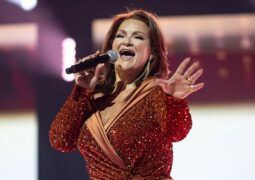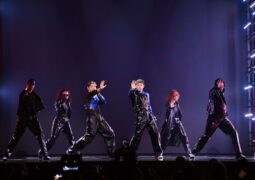Franck Pourcel, Anita Kerr, Horst Jankowski, Johnny Harris, Waldo de los Rios… one by one, these musicians were amongst the most popular in Europe -and beyond- in the 1950s, 1960s, and 1970s. However, all of them also have in common that they have largely been forgotten by the general public nowadays.
There used to be a time when in most entertainment shows on radio and TV an accomplished orchestra was present to take care of the music… but those days seem to be over. Even in Europe’s largest entertainment show, the Eurovision Song Contest, there has not been a single note of music played live since 1999. Up until that moment, each participating country sent a venerable conductor along to the extravaganza to wave the baton for its entry. Famous names such as Robert Stolz, Ronnie Hazlehurst, Noel Kelehan, Martyn Ford, and even Stefan Raab (who will host the 2011 contest in Düsseldorf) were chosen to conduct the Eurovision orchestra on one or multiple occasions.
It is high time to wipe away the thick layer of dust which has covered most of these band leaders. On the brand new website www.andtheconductoris.eu, each of the 346 (!) well-known and unknown conductors who were on the Eurovision stage between 1956 and 1998, has been given a biography, containing a career overview and details about his or her Eurovision involvement. This sometimes amounts to re-writing Eurovision history, in other cases it is simply about enjoying interesting and witty anecdotes.
Why, for example, did Dolf van der Linden refuse to lead the orchestra in Madrid for the victorious Netherlands entry in 1969? The answer can be found in his bio. And in case you are curious to find out what exactly happened when Spain’s 1990 entry ‘Bandido’ needed a re-start because the orchestra failed to play the song correctly, you will be able to read the entire story as told by the hapless conductor Eduardo Leiva.
The website is very much a case of ‘work in progress’. At the moment, completed biographies of some 40 conductors can be found on the website. Of the careers of all others, a concise synopsis has been added, which, in due course, will be replaced by a longer version. Work is going on continually to update the site with new information and unique photo material. Most data are being collected by interviewing the conductors themselves.
By extensively dwelling upon the lives and works of all those magnificent musicians, the website has inevitably become an indirect charge against today’s organizers of the contest, who persist in their refusal to allow any sort of live music. Therefore, on the site, an elaborate ‘Eurovision orchestra history’ has been added, which traces why the orchestra was dropped from the show in the late 1990s and was subsequently kept out in the years after, in spite of the lack of good reasons to do so.
Comments
Dick Bakker, conductor for the Netherlands on three occasions in the 1990s and moreover composer of Eurovision winner ‘Ding-a-dong’ (1975): “This new website offers a most complete and detailed survey of all conductors who participated in the Eurovision Song Contest. Containing a multitude of background information and pictures, this unique and most clearly arranged site is interesting not only for fans of the festival, but for everyone with a penchant for orchestrated music.”
Mats Olsson, conductor for Sweden on three occasions in the 1960s and 1970s and musical director of the 1975 Eurovision Song Contest in Stockholm: “Constructing this website was an outstanding idea, specifically because the days of television orchestras are over. I belong to a generation to which human beings with musical instruments in their hands were an obvious assumption for creating music and I think it is a good idea to give an impression to younger people of the way the music industry used to work in those days. From a Eurovision point of view, the site presents weighty historical documentation about what has been going on in the contest since it was first held in the late 1950s, with magnificent photos bringing to life what the festival was like in its early years.”




